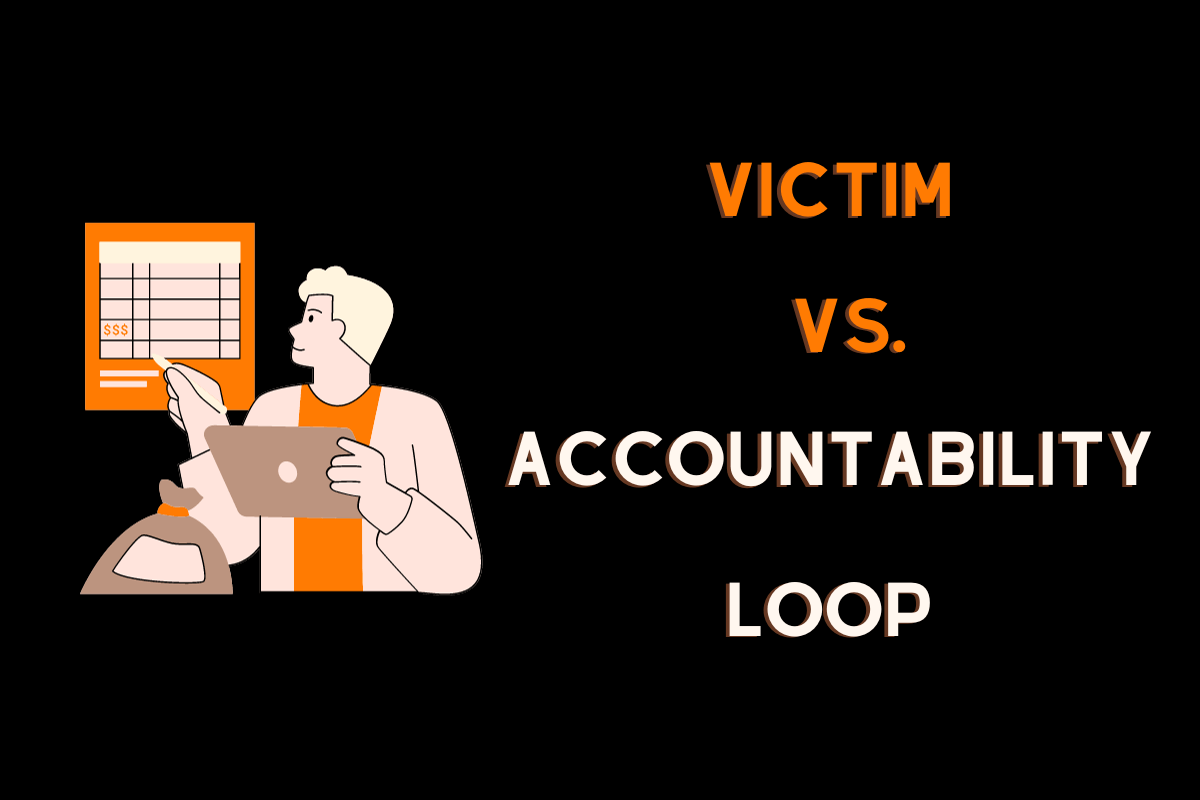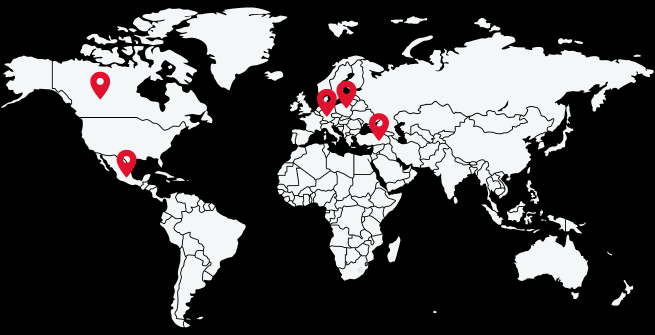The Victim vs. Accountability Loop is a concept that contrasts two mindsets: the victim mindset and the accountability mindset. It is based on the notion that we respond to situations one out of two ways: either as a victim or as someone who seeks accountability, which in essence means someone that embraces personal responsibility and accountability.
In practice, the Victim vs. Accountability Loop is best understood via a diagram, which depicts how we as people tend to react when ruled by a victim mindset, versus the steps we can take if we were to approach a situation bearing accountability. The visual depiction of the Victim vs. Accountability loop resembles the infinity sign, and clearly depicts in words how are intentions are translated through the actions we take based on either mindset: as a victim or as accountable.
But before we delve into what those action steps are, let’s review the differences between having a victim mentality versus a mentality of personal responsibility and accountability.
Victim Mindset

See It as Happening to Me
Individuals with a victim mentality tend to see external circumstances or events as something that happens to them. They may perceive themselves as passive recipients of circumstances beyond their control.
Blame Others or External Factors
In this mindset, there’s a tendency to blame others or external factors for challenges or problems. Personal responsibility is often avoided, and the focus is on attributing difficulties to external forces.
Feel Powerless
Victims often feel a sense of powerlessness and believe that they have limited control over their situations. This mindset can lead to a negative outlook and a lack of initiative.
Accountability Mindset

See It as Happening by Me
Individuals with an accountability mindset view events as opportunities for action. They recognize that they have a role to play and can actively shape their outcomes.
Take Responsibility
Taking ownership of one’s actions and outcomes is a key characteristic of the accountability mindset. Instead of blaming others, individuals focus on what they can do to influence the situation.
Empowered and Proactive
Those with an accountability mindset feel empowered to make positive changes. They are proactive in seeking solutions, taking initiative, and making choices that align with their goals.
The loop aspect comes in when individuals cycle between these mindsets. Someone might start with a victim mindset, but through self-awareness, coaching, or personal reflection, they can shift toward an accountability mindset. The goal is to break out of the victim loop and cultivate a mindset that fosters personal growth, resilience, and the ability to healthily overcome challenges.
Mark Samuel’s Personal Accountability Model

The concept of personal accountability was most popularly coined by authors Mark Samuel and Sophie Chiche, who are considered leaders in the Personal and Organizational Accountability Movement. Together, they are also at the helm of IMPAQ, a California based, worldwide consulting firm dedicated to facilitating leadership teams achieve sustainable, breakthrough business and culture transformation founded by Samuel with Chiche serving as Chief Operating Officer.
Mark Samuel’s Personal Accountability Model is designed to help individuals take ownership of their actions and outcomes. The model emphasizes personal responsibility and accountability as key elements in achieving success. Here are the main components of the model:
See It: This stage involves gaining clarity on what needs to be done. It’s about setting clear goals and understanding the desired outcomes. Seeing the task at hand clearly is the first step toward accountability.
Own It: Ownership is about taking responsibility for your role and acknowledging that you have control over your actions. It involves recognizing that you are accountable for the results, both positive and negative.
Solve It: Once you own your responsibilities, the next step is to actively find solutions to challenges or problems. This phase encourages problem-solving and a proactive approach to overcoming obstacles.
Do It: This is the implementation stage where you execute the plans and solutions you’ve identified. It’s about taking action and following through on your commitments.
Review It: After completing a task or project, it’s essential to review the results. This step involves reflecting on what worked well, what could be improved, and learning from the experience. Continuous improvement is a key aspect of the accountability loop.
The Victim vs. Accountability Loop explained

While it’s not necessarily a specific model developed by Mark Samuel, the Victim vs. Accountability Loop aligns with the broader idea of choosing actions that reflect personal responsibility and accountability rather than opting to victimize oneself.
The Victim vs. Accountability Loop purports that we start with a situation that we have two ways we can choose to handle. If following the track of accountability, then the choice is made to first recognize the situation and own it. The next action step is to forgive, or in other words “accept”.
This step depends on the situation at hand, but if anger or frustration is a feeling involved, then the clearest path forward is to acknowledge what has happened and consider the reasons why and forgive whatever possible. This means forgiving yourself, forgiving others or forgiving the environment that led to the situation to begin with.
The next healthy step to take is to self-examine and take away any knowledge possible from the situation at hand. Let the situation be an opportunity to learn a lesson.
The final step in the “Accountability Loop” is to then take action, which is exactly what needs to be done to change a situation.
Accountability Loop = Intention → Choice → Recognize → Own → Forgive → Self-Examine → Learn → Take Action = Situation
The Victim Loop begins with making the choice to ignore an unwanted situation and to deny it. The victim mentality seeks an outward source to blame and attempts to rationalize their own involvement and behavior.
The incentive to rationalize a negative situation is to resist change, the very action that as the word suggests will “change” a situation. Last, but certainly not least is the tendency and drive to hide, which anyone can plainly see is the opposite of taking healthy action to resolve the situation.
Victim Loop = Intention → Choice → Ignore → Deny → Blame → Rationalize → Resist → Hide = Situation
The clear action steps outlined in the Victim vs. Accountability Loop provide a roadmap for how to develop strategies to take proactive steps to achieve positive outcomes. In the same vein, this roadmap also shows the direction that the victim mindset drives us in.
By recognizing in words the actions we sometimes lean towards that do not result in resolving a situation we can create awareness of whether we are being driven by a victim mindset or one that accepts personal responsibility and accountability, which are the ways in which we can flourish.



